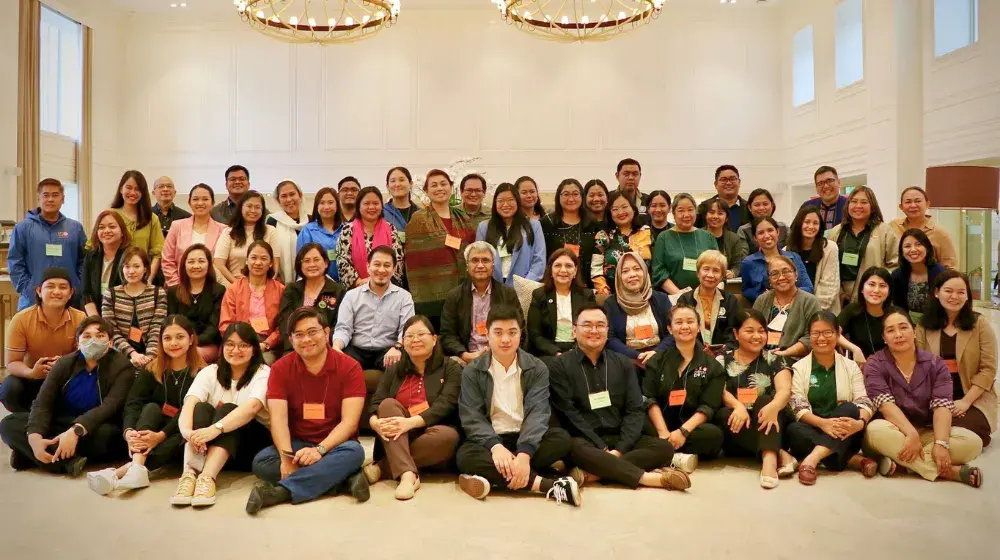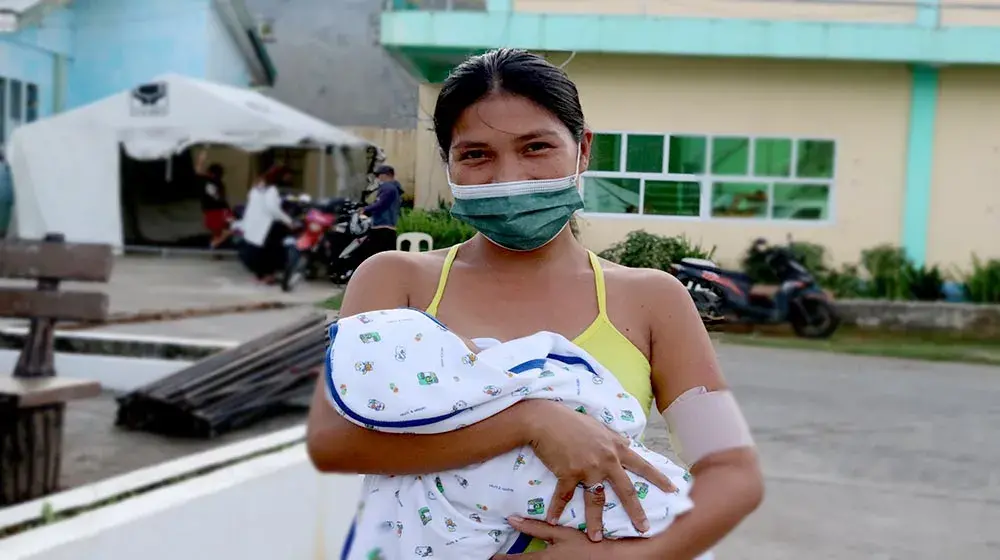LEGAZPI, Philippines – “I was washing clothes near my house when I heard the eruption from Mayon Volcano,” Jiassal Balatinsayo, told UNFPA. Eight months pregnant and residing almost 7 kilometres away from an erupting volcano in the village of Santa Misericordia, Ms. Balatinsayo, 37, fled with her husband, followed by their five children on 17 January.
“It was a very loud eruption and I was very nervous,” she told UNFPA. Ms. Balatinsayo and her family made the difficult journey to the San Andres evacuation centre where they have been ever since and may be for much longer.
Mayon Volcano, located in Albay province, 300 kilometres southeast of Manila, continues to show high levels of unrest. With the continued volcanic activity, the provincial government of Albay is now planning for a three-month evacuation.
The unpredictability of the Mayon Volcano’s eruption has left Ms. Balatinsayo, her family and many evacuees with no choice but to abandon their homes and livelihood for an indefinite period.
Reproductive healthcare needed
Over 88,000 people have been displaced so far, with 549 pregnant women and 1,719 lactating mothers staying in evacuation centres, according to February data from the Department of Health Regional Office V. UNFPA, the United Nations Population Fund, estimates that there could be as many as 2,500 pregnant women among the affected population with around 800 of them expected to deliver in the next three months.
These women require critical prenatal and post-partum health care, as well as help in maintaining proper hygiene and nutrition. “It is very hard here in the evacuation centre,” Ms. Balatinsayo told UNFPA, “especially when you have to use the toilet.”
Worryingly, while the San Andres evacuation centre lies on elevated ground, in the event of a major eruption, it’s expected to become isolated from the rest of the province due to lava and lahar flow. A similar situation occurred during the 2009 Mayon Volcano eruption, which cut-off San Andres’ access to the nearest hospital.
“Women and girls are far more vulnerable in emergencies and have specific needs. They need access to services for safe pregnancy and childbirth,” emphasized Klaus Beck, UNFPA Country Representative in the Philippines.
Happiness
In partnership with the Department of Health and with support from Australia, UNFPA has deployed an emergency maternity tent facility in the San Andres evacuation centre.
The maternity tent will help ensure access to safe deliveries for pregnant women staying in evacuation centres as well as for those living with friends and relatives in the area. The tent is staffed by a doctor and a team of nurses and midwives from the Department of Health as well as life-saving medical equipment for normal deliveries.
“We would like to thank Australia for this contribution,” Assistant Secretary of Health, Dr. Nestor Santiago told UNFPA. “The availability of services for pregnant women is now right here for them and they don’t have to go to a farther area,” he added.
A day after the maternity tent was set-up; Ms. Balatinsayo became the first beneficiary to access reproductive health services, with the maternity tent’s doctor ensuring a safe delivery and post-partum health care.
“I’m so happy that I’ve given birth and all is okay,” Ms. Balatinsayo told UNFPA. “Now I hope Mayon Volcano stops erupting so that we can go home,” she added with a hopeful smile.
- Mario Villamor





